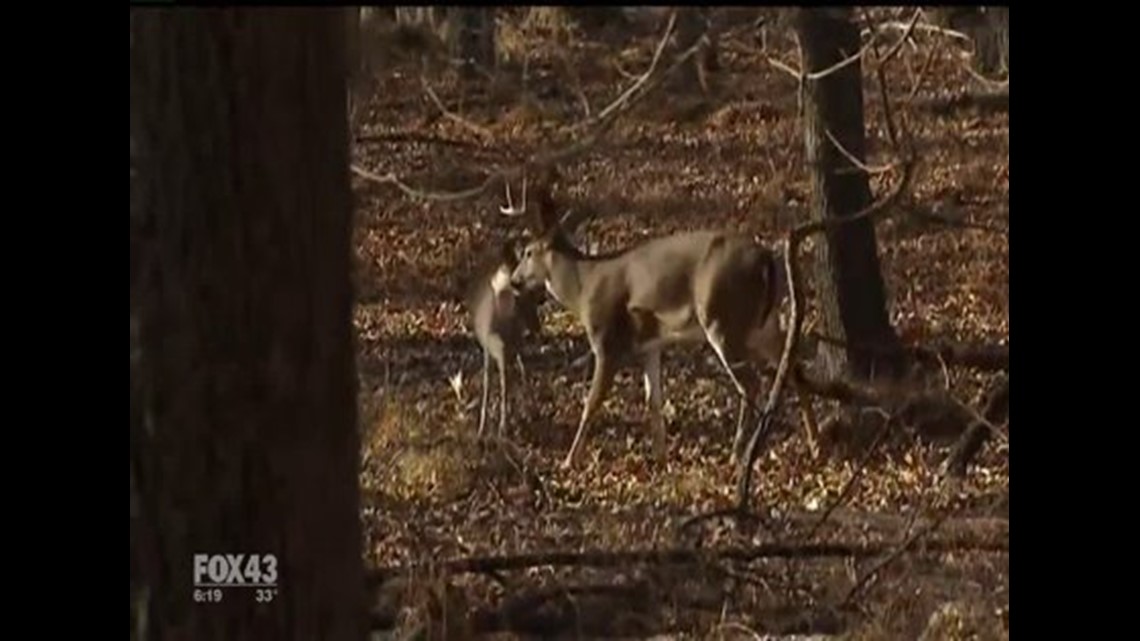

The Pennsylvania Game Commission has established the state’s second Disease Management Area in parts of four counties in response to three hunter-killed deer that tested positive for Chronic Wasting Disease.
Through an executive order, PGC Executive Director Carl G. Roe has created the state’s second Disease Management Area (DMA) in parts of Bedford, Blair, Cambria and Huntingdon counties. The first, in Adams and York counties, was established by executive order in October, 2012. Within these DMAs, there are special restrictions for people to minimize the risk of spreading CWD.
The executive order sets in place a variety of restrictions, including the following: it is illegal to remove or export high-risk cervid parts – including head, spine, spleen – from DMAs; all cervids killed in the DMAs are subject to testing by PGC; cervids within the DMAs cannot be rehabilitated, including injured and reportedly orphaned deer; the use or possession of cervid urine-based attractants is prohibited in DMAs; direct or indirect feeding of wild, free-ranging deer is illegal in DMAs; no new PGC permits will be issued to possess or transport live cervids.
Road-killed deer can be picked up under certain conditions, and those looking to do so can call their PGC regional office for approval.
“The second executive order creates a second Disease Management Area over nearly 900 square miles in Bedford, Blair, Cambria and Huntingdon counties and changes laws, regulations and restrictions related to free-ranging deer and other cervids,” Roe explained. “They are steps we have taken to provide additional protections to the state’s invaluable populations of wild deer and elk.
“We are counting on all Pennsylvanians to help us in this important endeavor,” Roe said. “Their cooperation will play a major role in helping to contain or limit the spread of CWD within the Commonwealth.”
The executive order and maps with descriptions of both DMAs have been posted on the Game Commission’s website, www.pgc.state.pa.us, in the CWD Info Section, which can be accessed from the website’s homepage. They also will be published in the 2013-14 Pennsylvania Hunting and Trapping Digest. Combined, both DMAs total nearly 1,500 square miles of the Commonwealth.
The Commonwealth’s CWD Interagency Task Force went into action to address the threat of the disease to captive and wild deer and elk populations in the state as soon as a captive white-tailed deer tested positive for CWD in October. Task force members include representatives from the state departments of Agriculture, Environmental Protection and Health, the Pennsylvania Game Commission, the U.S. Department of Agriculture, U.S. Geological Survey/Pennsylvania Cooperative Fish and Wildlife Research Unit and Penn State University/Cooperative Extension Offices. Generally, the state Department of Agriculture manages threats from captive deer and other cervids, while the Game Commission manages threats from wild deer and elk. The task force works to carry out an established response plan, which includes education and outreach with public meetings and minimizing risk factors through continued surveillance, testing and management.
Pennsylvania’s first case of CWD was reported by the state Department of Agriculture October 11, 2012; it involved a captive-born and -raised white-tailed deer from a farm near New Oxford in Adams County. The sample tissue was tested at the Pennsylvania Veterinary Laboratory in Harrisburg and verified at the National Veterinary Services Laboratory in Ames, Iowa. The Game Commission on March 1 announced the state’s first three cases of CWD in free-ranging deer.
CWD attacks the brains of infected deer, elk and moose. It is transmitted by direct animal-to-animal contact, such as through saliva, feces and urine, or indirectly by exposure to a contaminated environment. The disease is fatal and there is no known treatment or vaccine. CWD was first discovered in Colorado captive mule deer in 1967, and has since been detected in 21 other states and two Canadian provinces, including Pennsylvania’s neighboring states of New York, West Virginia and Maryland. Pennsylvania is the 22nd state to find CWD in a captive or wild deer population.
The 2012 hunter-killed deer from Bedford and Blair counties that tested positive for CWD were the first since the PGC began testing for the disease in 1998. Prior to that, more than 43,000 free-ranging deer and elk had tested negative for CWD.
For additional information on CWD visit our website at www.pgc.state.pa.us
